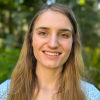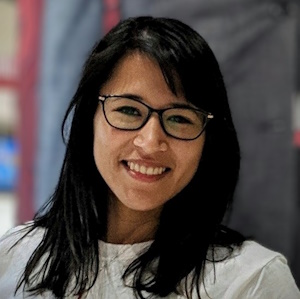Ancient Maya burial study challenges human sacrifice theory, points to acts of placemaking

Sandee Oster
contributing writer

Gaby Clark
scientific editor

Robert Egan
associate editor

A recent study by Dr. Angelina Locker in the Journal of Anthropological Archaeology implemented bioarchaeological methods to determine if the secondary burial remains found within a non-elite Late Preclassic (300 BCE–250 CE) could relate to ancestry, placemaking, and movement beliefs.
Typically, secondary burials of skulls, arm bones, and teeth are viewed through a lens of violence and sacrifice in ancient Mesoamerican societies in which such practices were prevalent. However, from ethnohistoric and historical accounts, we also know that the pre-Columbian societies had complex beliefs about the soul, ancestors, and the afterlife.
In the Maya belief system, specifically, the soul could be divided into four separate parts. "Baah," which means the self represented by the head, and represents one's life force. "Ik'" represented the breath of the soul and was associated with wind, jade, and teeth. "Ch'ulel" was the essence which resided in the heart and blood, and finally, "wahy" were companion spirits, typically animals, who would die after their human counterpart passed on.
Since an ancestor's soul did not necessitate their entire body to be present, parts of it could be used to communicate with their descendants, such as the skull, mandible, teeth, or arm.
However, typically when such remains are found secondary to a primary burial, they were interpreted as evidence of ritual violence, offerings, and sacrifices either for the primary deceased, gods, or buildings.
However, Dr. Locker's study contributes to discussions contesting all such findings as being the result of violence or sacrifice.
"There is a lot of variability in the Maya era. There are many examples of tooth caches (of lots of teeth, often a collection of premolars), extra mandibles, or skulls included in graves. Individuals missing their skulls, of burials with just bundled long bones (like leg bones or arm bones), or of just finger bones.
"Many bioarcheologists have contested using sacrifice as a catch-all to explain the placement of secondary burials. This paper contributes to that discussion and focuses on the placement of mandibles and teeth."
To do this, Dr. Locker examined the non-elite burial recovered on the periphery of the Dos Hombres site, Belize. The site was once a major urban center with a population of 10,000 to 15,000 people.

Archaeological excavations, however, only revealed 21 burials, belonging to a total of 35 individuals. Of these, 17 were recovered outside the core settlement, including a burial containing three individuals forming part of the Dancer Group. The Dancer Group was a rural commoner household around 1,55km west of Dos Hombres.
"There were three bundled burials within the Dancer Group—Burial Episodes 1, 2, and 3. My paper focused on Burial Episode 2. Episodes 1 and 3 were not included, unfortunately, because I did not have access to them. When I sampled the ancestral burials for my dissertation research, I sampled burials that were available to me and curated at the University of Texas," says Dr. Locker.
Initially, this grave had been interpreted as a primary burial containing the sacrificial remains of other individuals.
However, Dr. Locker offers an alternative explanation based on the bioarchaeological results and context of the burial.
The primary remains belonged to a young woman, buried together with a grave marker and the remains of mussel feasting deposits. Two additional individuals were placed in her grave, represented by teeth; these were a 20- to 34-year-old individual and a 30- to 40-year-old individual.
Strontium and oxygen isotopic analyses revealed that while the young woman had grown up on Dos Hombres, the other two individuals were non-local.
The peripheral location and non-elite status of the primary burial undermine traditional sacrifice interpretations. Sacrificial offerings were typically associated with elite burials, major ceremonial centers, or significant architectural dedications. Therefore, a young woman buried 1.55 km from the main settlement, with minimal grave goods, is unlikely to have represented a sacrificial burial interred with human offerings.
Additionally, considering the Maya beliefs about Ik', the presence of teeth from non-local individuals may relate to the transportation of an ancestral soul, interred together with a primary burial to establish claims to place or kinship.
By bringing these non-local remains of ancestors to a new place, the community may have been trying to establish ancestral rights by occupying the land or maintaining ancestral connections with ancestors whose primary burials are elsewhere.
Written for you by our author , edited by , and fact-checked and reviewed by —this article is the result of careful human work. We rely on readers like you to keep independent science journalism alive. If this reporting matters to you, please consider a (especially monthly). You'll get an ad-free account as a thank-you.
More information: Angelina J. Locker, Dearly De-Parted: Ancestors, body partibility, and making place at Dos Hombres, Belize, Journal of Anthropological Archaeology (2025).
© 2025 Science X Network



















